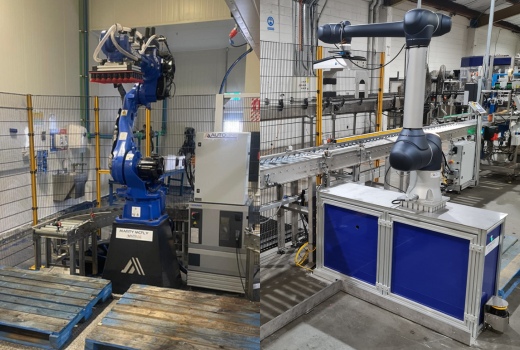If you ruled out robotic automation several years ago – or think it’s just an option for the big players – now is the time to take a new look. With recent advancements that cut costs and expand capabilities, robotics has become a viable path to profitability for more businesses than ever.
In today’s economic environment, with low-interest rates and government assistance, business owners are able to automate for a sustainable return on investment more than ever before!
A few questions to consider are:
- Are skilled workers difficult to find for employment?
- Have hourly rates increased due to higher employee demand?
- Has your production volumes increased?
- Are you turning opportunity away because of limited production capacity?
- Have international suppliers impacted your supply chain and you need more control to manufacture in-house?
Read more about the Government COVID-19 assistance here

1. Robotics reduce production lead times
- Simple tasks are performed more quickly versus manual processes.
- Robots free-up your skilled workforce to perform more complex tasks, making better use of time and money.
- Robotics provides consistent and predictable productivity that reduces management oversight. Common factors that jeopardize timelines (retraining, shift changes, sick leave and turnover) have less impact on your operation.
2. Robotics can easily scale and adapt to changing demands
- Up to 4 robots can be added to a single controller to multiply the speed/scale of a task.
- A robot can be programmed to perform multiple jobs in a single setup – easing transition time, training and space requirements.
- Programming / reprogramming a robot is typically less time than prepping a conventional setup. Robot programming has become easier than in the past, and programmers can be trained by Autoline robot technicians in-house.
- Software and perception technology has expanded robotic capabilities in recent years – allowing them to perform more tasks than previously possible.
3. Robotics deliver consistent quality
-
Robotic movements are consistent, focused and precise – often within 0.5 mm of repeatable accuracy.
- Avoid increased productivity loss and re-work that tends to happen late in a shift or work week due to fatigue.
- Quality scales up without the challenges of finding skilled workers to maintain it.
4. Robotics deliver sustained return on investment through cost reduction and added value.
- Capital expense can be easily financed and provide tax advantages.
- Through an in-house specialist or robotics partner, ongoing programming and maintenance costs are lower than training and maintaining equivalent staff.
- The life cycle of a robot can last years beyond its break-even threshold, then can be remanufactured for a “second life.”
- Unlike other forms of automation, robots can be repurposed for a broad range of applications.
- Increased margins through predictable, high-quality production give you the leverage needed to stay competitive, retain customers and win new business.
Click below to read OTC Daihen’s blogs about Robotic Automation:
When Should My Company Invest In Robotic Welding?
Is Robotic Automation Right For My Company?
Do Robots Steal Jobs From Welders? Our Experts Weigh In.






